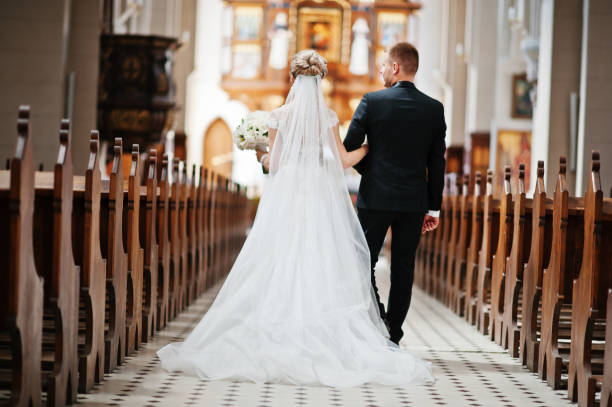Customising Your Jewish Wedding Ceremony for Interfaith Couples: Embracing Diverse Traditions
A wedding is a blessed moment in everybody’s life, where people have opportunities to celebrate love, family, and faith. For an interfaith wedding couple, particularly for people who are planning a Jewish wedding, the ceremony means more than a formality. It is a celebration of values and a combination of different cultures and spiritual faiths. This blog will discuss Customizing Your Jewish Wedding Ceremony for Interfaith Couples: Embracing Diverse Traditions.
Nowadays, interfaith weddings are rapidly becoming common in our society of different cultures. According to the reports of Pew, more than 60% of Jewish people in America married outside the religion in the time of 2010 to 2020. These couples are usually faced with a question from society or family about how we make a wedding that celebrates both religions. But here we shared a helpful way to include Jewish and non-Jewish rituals in an interfaith wedding.
The Foundations of a Jewish Wedding Ceremony
Understanding the basic elements of a traditional Jewish wedding can help you customize your Jewish wedding correctly. These key elements are:
- The Chuppah: It is a canopy held for the wedding ceremony and shows the house that the couple will make together.
- The Ketubah: This is a type of marriage agreement signed before the wedding ceremony, declaring the dedication of the couple to love.
- The Ring Exchange: Generally, the men place a ring on the finger of the bride with an Orthodox Hebrew vow, and many modern weddings include mutual ring exchanges.
- Sheva Brachot: In this ritual, blessings are recited over the couple, showing happiness and hope for their future.
- Breaking of the Glass: This ritual symbolizes both the fragility of life and the destruction of the Temple in Jerusalem.
These elements can be saved, adapted, and grown to fit an interfaith couple’s values and love.
Ways to Embrace and Include Diverse Traditions
Co-Officiation and Creative Clergy Collaboration
Traditionalists honor both religions during the ceremony by co-officiation. A rabbi and Christian priest, a Unitarian officiant versed in both rituals, and even a family member trained in such ceremonies all count as possibilities for co-officiation. Ensure that the minds of both officiants are open to working together and aligned with the mutual vision.
In the interest of unity, the ceremonial language can also be blended. For example, it may open with a universal welcome: We gather today to witness the union of two souls, two faiths, and two families.
Designing a Customized Order of Ceremony
Do not feel constricted by a set timeframe of one tradition; design whatever flow is best suited to your spiritual and emotional top priorities. For example:
- Welcome by both officiants
- Reading from Hebrew scriptures
- Unity candle lighting
- Exchange of vows and rings
- Sheva Brachot + blessings from the other tradition
- Breaking of the glass
- Final benediction or interfaith prayer
This itinerary preserves the spiritual integrity of both religions and allows creativity and personalization in the process.
Tips for Writing Inclusive Vows and Readings
Custom-made vows allow for reflection on what has been observed throughout their journey and beliefs held. Consider including expressions of respect, working together with a shared purpose, providing support to one another, and the weaving together of their identities.
Example Vow Excerpt:
“I shall honor your traditions and shall make your family mine. I shall celebrate your holidays, learn your customs, and cherish all the ways our faiths empower us together.”
Some readings that work best before the altar in an interfaith ceremony might be:
- Excerpts from Song of Songs (Tanakh)
- 1 Corinthians 13 (Christian New Testament)
- Poems of Rumi Ka, Khalil Gibran, or Mary Oliver
- Proverbs or folk tales from both cultures express love, endurance, and unity.
Incorporating Rituals from Both Faiths
It is more than just the spoken elements of a ceremony. Symbols, music, gestures, and anything of that sort make up a unique sensory-emotional experience that matters to each and every guest.
Jewish rituals to incorporate:
- Chuppah with fabric contributions from both families
- Breaking of the Glass, followed by a communal shout of “Mazel Tov!”
- Hebrew blessings (translation and explanation in the program)

Symbols from Christian or Other Traditions to Include:
- Unity Candle or Sand Ceremony, which symbolizes the joining of two into one
- Christian Prayer or Blessing, read by a parent or elder
- Hymns or Gospel songs are part of the musical selections.
There are lots of couples who invent their own ceremonies. Planting a tree during the ceremony, symbolizing growth and being rooted in shared values, is another example.
Handling Sensitive Conversations with Family
People sometimes meet resistance or find themselves confused, especially if they are experienced families. Here are some more tactful suggestions:
- Start talking early: Never leave major decisions till the last minute as a surprise for family members.
- Speak of values, never of labels: Say that a blended ceremony stands for mutual respect, never for rejecting one’s inheritance.
- Educate: The proceedings for the wedding can give the significance of each ritual so that guests may follow and appreciate unfamiliar elements.
If possible, involve everybody in your family: Parents can suggest songs or pick readings so that they feel engaged.
The Wedding Program: An Effective Educational Tool
Your ceremony program will not just be a list of events but an opportunity to educate and close gaps. Here you should include the following:
- Brief explanations of each ritual
- Translations for Hebrew prayers
- Acknowledgment of both traditions
- Personal notes from the couple about their cultural journey.
These notes go toward creating inclusiveness and ensuring all the guests feel like peers.
Conclusion
In conclusion, customizing a Jewish wedding for interfaith couples allows for a significant celebration of different religions and shared values. By combining aspects from both religions, couples form an inclusive experience that celebrates their journey together. With honest communication and creative partnership, families can adopt this beautiful marriage, turning the wedding into a testament of love and dedication.
FAQS for Customising Your Jewish Wedding Ceremony for Interfaith Couples: Embracing Diverse Traditions
Question 1. Can non-Jewish rituals be included in a Jewish wedding?
Answer: Interfaith couples can include rituals and traditions from both religions. For instance, you can add readings, prayers, or symbols from the non-Jewish partner’s religion to create a meaningful & inclusive wedding.
Question 2. Is it required to have two officiants from different faiths in an interfaith wedding?
Answer: Although it is not mandatory, having co-officiants from both religions can help celebrate each faith effectively. Consider a rabbi with a priest or a familiar family member, ensuring they cooperate respectfully for a coordinated wedding.
Question 3. What part does a Rabbi play in an interfaith wedding ceremony?
Answer: A rabbi can offer advice on including Jewish traditions in the wedding while respecting both partners’ faiths. They can help form a memorable and inclusive wedding, ensuring that Jewish rituals are celebrated alongside customs from other faiths.



